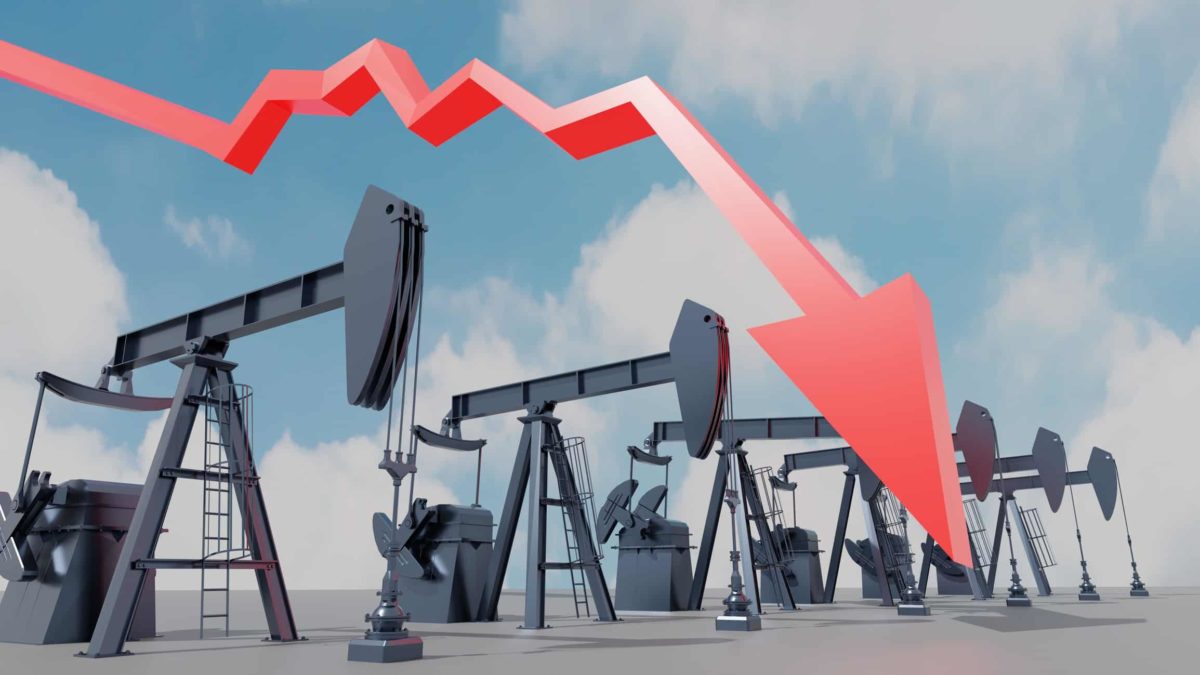S&P/ASX 200 Index (ASX: XJO) energy stocks are under selling pressure today as global oil prices took another leg down.
International benchmark Brent crude oil is down 3.5% since this time yesterday, currently trading for US$69.39. That's down some 24% since early April.
To give you an idea of the magnitude of the oil price retrace over the past months, you'd have to go back all the way to December 2021 to find a cheaper barrel of Brent.
As you'd expect, the overnight decline in oil prices has traders hitting the sell button on ASX 200 energy stocks. Here's how the big three oil and gas stocks are tracking at the time of writing:
- Woodside Energy Group Ltd (ASX: WDS) shares are down 1.8%
- Santos Ltd (ASX: STO) shares are down 1.2%
- Beach Energy Ltd (ASX: BPT) shares are down 1.6%
For some context, the ASX 200 is down 0.3%, while the S&P/ASX 200 Energy Index (ASX: XEJ) is down 1.2% at this same time.
ASX 200 energy shares hit on two fronts
ASX 200 energy shares like Woodside and Santos are eyeing a potential oil supply glut amid concerns of falling global demand and increased supply.
On the supply side, it's becoming clear that the Organisation of Petroleum Exporting Countries and its allies (OPEC+) have far less market moving power than it did a decade ago.
Over the weekend, OPEC+ announced it would delay its planned production restoration by two months in an effort to prop up the slumping oil price. The cartel had intended to begin gradually rolling back its voluntary production cuts of 2.2 million barrels per day in October.
But Saudi Arabia is no longer the world's top oil producer. Nor is Russia. That title now rests with the United States, where production remains on track to set new record highs in 2025. Major global oil producers Canada and Brazil, both outside of OPEC+, are also not scaling back production.
On the demand side, the oil price – and by connection ASX 200 energy shares – are being pressured by weaker economic figures out of the US and China, signalling potentially lower oil demand from the world's top two economies.
Commenting on the sliding oil price, Dennis Kissler, senior vice president for trading at BOK Financial Securities, said (quoted by The Australian Financial Review), "The softening Chinese demand has been the biggest bearish aspect, and many traders are now beginning to think the slackening demand from Asia is going to be a longer-term problem."
Oil market strategist Clay Seigle added (quoted by Reuters):
There's almost no oil demand growth in the advanced economies this year. Fiscal stimulus in China has not boosted the construction sector; that's one big reason Chinese demand for diesel is shrinking.
Now what?
What investors can expect next for Woodside shares and its rival ASX 200 energy stocks will hinge on the demand side of the equation. I think it's unlikely that non-OPEC producers will cut production unless oil prices fall significantly further.
If the US Federal Reserve succeeds in its 'soft landing' approach for the US economy, higher demand from the world's top economy should see the oil price push higher as well. And if China's government finally relents and opens the stimulus taps wide to spur its sluggish economy, we'll also likely see oil move higher.
Investors in ASX 200 energy stocks will want to keep an eye out for the International Energy Agency's next monthly outlook for global oil supply and demand. That's due out on Thursday, overnight Aussie time.








